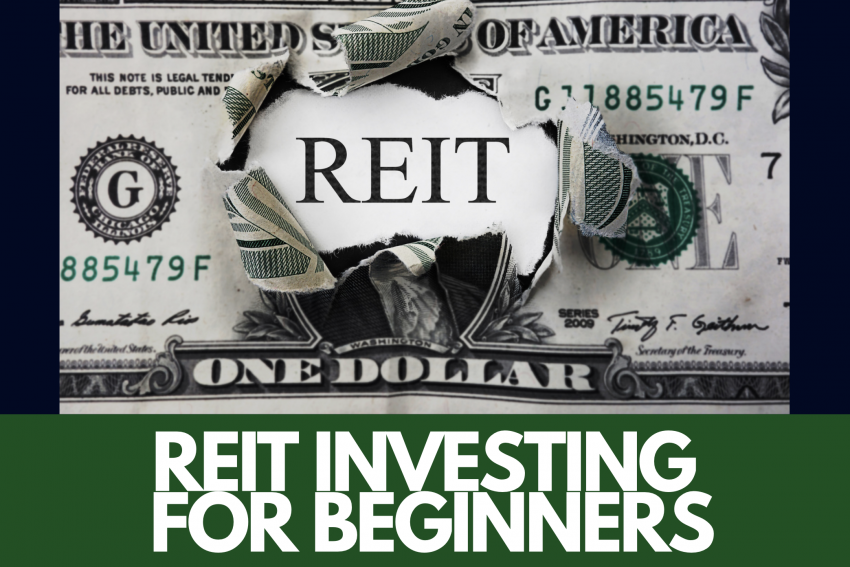Investing in Real Estate Investment Trusts (REITs) has become increasingly popular among individuals seeking to diversify their portfolios and generate steady income.
With the dawn of a new year, 2024 is now is an excellent time for complete beginners to consider adding REITs to their investment strategy. In this article, we will explore the basics of REITs, discuss the differences between mortgage REITs and equity REITs, and provide a step-by-step guide on how to get started investing in these vehicles.
What are REITs?
REITs or real estate investment trusts, are companies that own or finance real estate properties, such as office buildings, apartments, and shopping centers. By law, real estate investment trusts are generally required to distribute at least 90% of their taxable income to shareholders in the form of dividends. This makes them a potentially attractive option for those seeking higher levels of passive income in their portfolio(s).
Types of REITs: Mortgage REITs vs. Equity REITs
There are two primary types of REITs: Mortgage REITs and Equity REITs. Understanding the differences between these two categories is essential to understanding these investment vehicles.
Mortgage REITs (mREITs): Mortgage REITs, also known as mREITs, invest in mortgages or other types of real estate debt. They typically generate revenue by collecting interest payments on these loans. mREITs are less directly affected by property market fluctuations, making them a relatively stable investment option. However, they can be highly sensitive to changes in interest rates, which can impact their profitability.
Equity REITs: Equity REITs, on the other hand, invest directly in physical properties, such as office buildings, apartments, and retail spaces. They generate revenue through rental income and property appreciation. Equity REITs are typically more directly impacted by changes in property values and rental markets, making them more sensitive to specific locations, and localized economic conditions (rent markets can differ significantly).
- Other Types of REITs: In addition to Mortgage and Equity REITs, there are other types of REITs, including:
- Hybrid REITs: Combine elements of both Mortgage and Equity REITs.
- Specialized REITs: Typically on specific property types, such as healthcare facilities or self-storage units.
- International REITs: Invest in properties outside of the United States.
Getting Started with REITs in 2024:
Now that you understand the basics of REITs and the differences between Mortgage and Equity REITs, it’s time to learn how to get started investing in REITs:
1. Open a Brokerage Account: Choose a reputable online brokerage firm that allows you to buy and sell REITs. Consider factors such as fees, commission-free trades, and investment research tools. Some good examples include Charles Schwab, Fidelity & E*Trade by Morgan Stanley (there are many others).
2. Research REITs: Start by researching individual REITs, including their financial performance, dividend history, and market trends. You can find typically find this information on the REIT’s website, various financial news outlets, or online investment research platforms.
3. Consider a REIT Index Fund: If you’re new to investing in REITs, consider starting with a REIT index fund. This will provide broad diversification and minimize individual company risk. A couple of examples of REIT index funds include the Vanguard Real Estate Index Fund ETF (VNQ) & the iShares US Real Estate ETF (IYR).
4. Diversify Your Portfolio: As you become more comfortable with REITs, diversify your portfolio by investing in different types of REITs, such as Mortgage, Equity, and Specialized REITs.
5. Monitor and Adjust: Regularly review your REIT investments and adjust your portfolio as needed. Keep an eye on dividend yields, financial performance, and market trends to ensure your investments align with your goals.
Conclusion
Investing in REITs can be a valuable addition to a well-diversified investment portfolio. By understanding the basics of real estate investment trusts, including the differences between Mortgage and Equity REITs, and following the steps outlined in this guide, you can confidently invest in these vehicles in 2024.
Remember, it’s always essential to do your own research, set clear investment goals, and monitor your portfolio regularly to ensure success as an investor.




